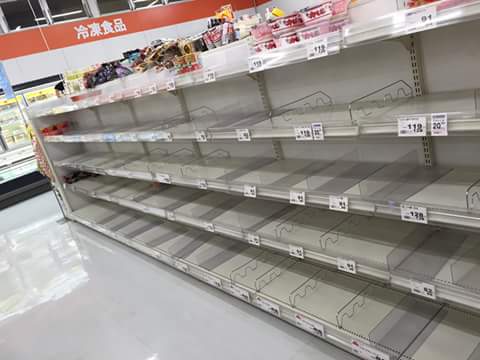 |
| Taken from this album |
The quake made an extraordinary sound, like nothing I've ever heard. The closest I can think of is a wave just as it crashes over your head, or the rushing in your ears just before you pass out. As the quake rolled on and on I grabbed the baby and braced myself in the door frame while shouting to Tiger to wake up. Some how neither the quake, my shouting, or the many dogs barking across the neighbourhood woke him. I couldn't leave the doorway with the baby in my arms so I sort of leaned out and grabbed Tiger by his toe (literally) and yanked as hard as I could to pull him to safety. He got a large friction burn from me pulling him across the tatami (tatami burns hurt much more than carpet burns, in my opinion) and then spent days telling people he'd been injured in the quake... technically true but a little misleading.
We were in Japan when 3.11 happened. You don't really get over something like that, and we've always consequently been very conscientious about disaster preparedness. However, we were just weeks away from leaving Japan and there were piles of packing and sorting everywhere. One relief was that I had passed the baton literally two weeks before to the new neighbourhood association rep. I had spent a year as the "information officer in the event of emergencies", meaning in a disaster like this I was supposed to monitor the radio, pass on evacuation information etc to the entire suburb. Why did they entrust a barely literate foreigner with this very language heavy and important role? The short answer is, as with most things, because Japan.* Other responsibilities including taking the role call to ensure everyone in the block I represented was safe, something I was also very glad not to have to do since many of our neighbours had typically Kyushu names, meaning the kanji were read in a totally different way to standard Japanese, and I never completely mastered them all.
 |
| The supermarket shelves were bare, both because of panic buying and because the highway collapse meant the trucks couldn't get through. |
The magnificent castle at Kumamoto we'd visited on our "let's contribute to the local economy" holiday right after 3.11 was terribly damaged, and the highway we would take to the airport when we left had partially been swallowed by the earth.
 |
| Source |
We slept in our clothes, torches in hand, and aftershocks rocked us through the night.
 |
| Alerts... we didn't get a lot of sleep |
*The longer explanation is the the positions are predetermined based on the rotating allocation and the system may not be changed, even for reasons like 'this person is literally incapable of performing the required tasks'. Because Japan.



















